December 17, 2019
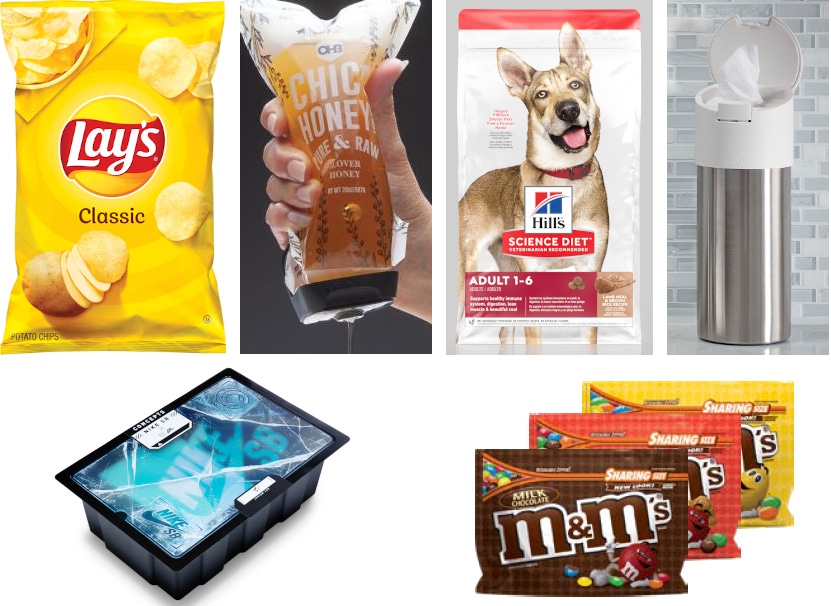
The past 12 months may or may not have been pretty in your overall world, but in the world of packaging, they were beautiful.
The most-read packaging design-related articles from Packaging Digest reflect an industry full of creative minds and innovative thinkers. Faced with the challenge of coming up with functional packages that resonate with consumers, many designers broke new ground. These innovators incorporated novel materials, used existing formats in interesting ways, tackled formidable challenges and introduced designs that delight.
The packages found in our top stores cover nearly every industry—food, apparel, cannabis, health and beauty, pet products and many more. What’s more, they go beyond presenting a pretty package to tackling a range of challenges, such as increasing product sustainability and defying gravity in space travel.
From the bottom up, enjoy!

12. Social media-friendly food packaging ‘reignites’ Lay’s brand
Social media frequently drives, rather than follows, conversation among Americans these days. While most consumer brands have a presence on several social platforms, many continue to struggle in finding ways to incorporate social elements on their packaging and encourage consumer engagement.
Recently, Frito-Lay North America rolled out its first significant Lay’s chips pack redesign in a dozen years. The new look incorporates several elements intended to engage consumers, and it reflects the interests and behaviors of an increasingly social-savvy population. For example, the photography on the front of the pack shows the food shot from above, as an Instagrammer would. Also, the back of the pack shares the brand’s social platforms and encourages consumers to interact.
Other features include:
• smaller Lay’s logo on the front of the package, placed closer to the center than the top;
• back-of-the-bag imagery features fun photos, punctuated with flavor-descriptive words;
• more natural, realistic feel to product photos and images.
The updated design debuted in September on the new Flamin’ Hot Dill Pickle flavor and converted across all varieties in October.
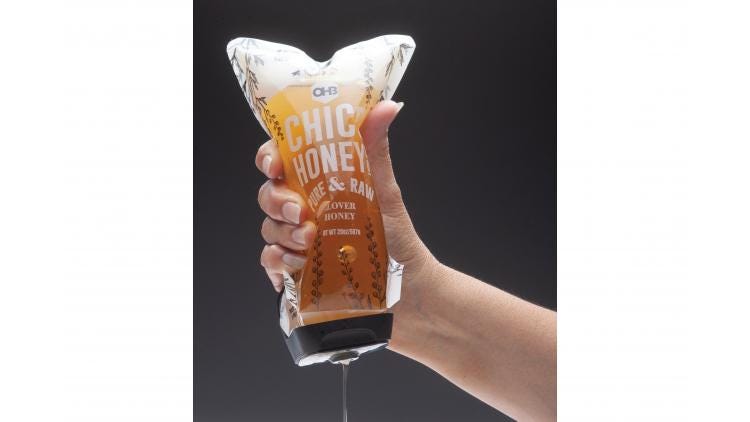
11. Inverted pouch trend upends food packaging: Chico Honey
Consuming honey can be a messy affair, causing sticky drips on the outside of the container, on kitchen counters and…well, everywhere. With its category-first inverted pouch packaging, Chico Honey aims to please consumers by creating less mess.
Inverted pouches have been slowly becoming more popular with brands, starting in 2015 with Daisy sour cream’s stand-up pouches. The format has since spread to barbecue sauce, yogurt and other food products. This summer, Chico Honey launched its sweet stuff in a 20-ounce inverted StandCap pouch, manufactured by Glenroy.
“We wanted to bring a product design to market that was mess-free and user friendly,” says Mike Watson, the company’s sales and brand manager. “Honey can be a sticky sweet treat, so having it mess-free makes life easier. We considered having the product packed in smaller sachet pouches until we fell in love with the idea of the StandCap pouch.”
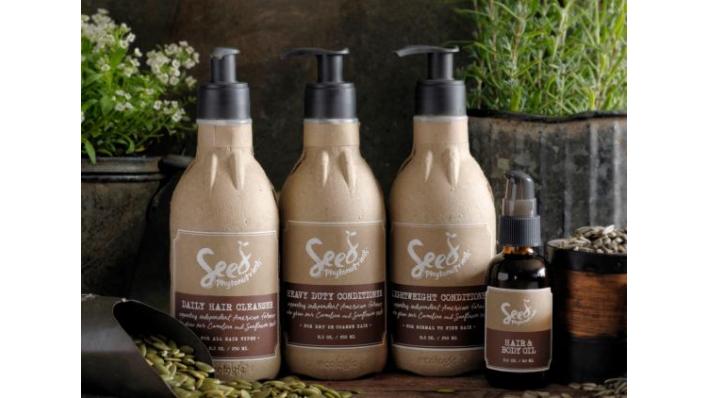
10. Packaging innovation awards celebrate excellence
Dow Chemical’s Awards for Packaging Innovation celebrates the year’s best and brightest achievements in packaging design. Winners typically show an impressive level of creativity, ingenuity and design talent.
This year marks the awards’ 30th year, with the competition drawing more than 200 entries from 30 countries. Judges whittled the nominees down to select nine Diamond Finalist winners, 8 Gold Award Winners and 11 Silver Award winners.
A few packages from the Diamond Finalist winners include:
• Coca-Cola’s Simply Beverages container: The brand reduced the weight of its 89-ounce Simply Beverages juice container by 9% and improved the package’s recyclability by switching to an extrusion blow-molding PET resin that complies with resin identification code #1 (PETE). Coca-Cola partnered with resin supplier Indorama Ventures and converter CKS Packaging on the project.
• Ecologic Brands Inc.’s Seed Phytonutrients paper bottle: This container is made from 100% post-consumer recycled paper on the outside, and a 100% post-consumer recycled plastic liner on the inside. Water resistance is achieved by mixing proprietary minerals with the paper fibers and by using heat and pressure to bind the fibers during production of the outer shell.
• Delivering Happiness Ltd.’s flat wine bottle: Designed for the Garcon Wines brand, this 750-mL bottle (made from 100% post-consumer recycled PET) fits through residential mail slots.

9. Top 3 AmeriStar winners excel in packaging design, sustainability
The Institute of Packaging Professionals celebrates innovation in packaging design each year with its AmeriStar Award program. Each year competition is fierce, and the winners reflect the pinnacle of packaging ingenuity.
This year, a panel of judges (including Packaging Digest Executive Editor Lisa McTigue Pierce) convened to review more than 50 packages in 17 different categories. The top three honorees are:
• Best in Show—The Estee Lauder Companies’ Clinique iD dual-pump package combined two products in one package—a hydration base and a specialty booster serum. Consumers dispense both formulas with one press of the actuator.
• Design Excellence—Owens-Illinois Inc.’s O-I: EXPRESSIONS imaging technique uses direct-to-glass digital printing to decorate glass bottles. The RELIEF version creates tactile effects on glass bottles and packaging.
• Sustainable Packaging—Sherwin Williams’ Krylon Industrial Quik-Tap aerosol package separates the valve and actuator from the aerosol can to help reduce hazardous waste and improve recyclability.
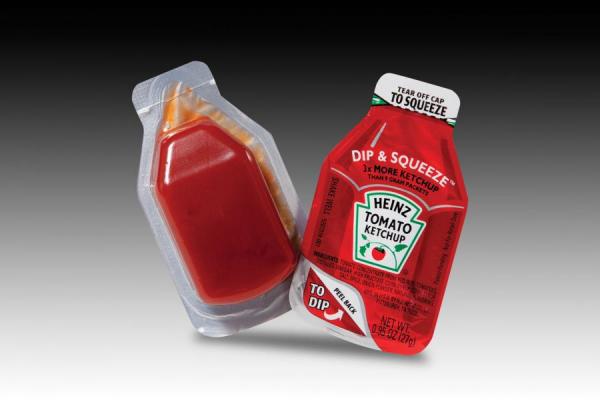
8. Evolution of a package: Heinz ketchup
Since 1869, Heinz ketchup has been a condiment consumers crave. In the decades since its debut, the packaging has gone through a number of evolutionary changes.
To honor the brand’s 150th anniversary, Packaging Digest walked through some of the ketchup’s most notable packaging changes:
• 1876: Heinz launches in clear glass bottles.
• 1968: The condiment launches aluminum-foil-laminated foodservice packets, still popular with take-out joints today.
• 1983: Squeezable plastic bottles debut.
• 2010: The Dip & Squeeze thermoformed containers debut (see photo above), offering more ways to use the condiment and three times more ketchup than foil packets.

7. Pets star on new packages of Hill’s Science Diet pet food
People have strong, fond feelings about their pets. Hill’s Science Diet aims to capitalize on that by putting photos of beloved critters on its updated cat and dog food packaging.
The revamp impacted all of the brand’s food bags and cans—more than 2,000 stock-keeping units (SKUs). In addition to showcasing adorable canines and felines, the updated packaging also carried a message. A callout reading “Helped 9 Million Shelter Pets Find a Forever Home” highlights the company’s work in helping homeless animals.
The updated graphics include images of real food ingredients used in the recipes, like chicken. The packs also incorporate color coding to signify various product subcategories. The updated packaging continues the previous tradition of using a white background to convey the brand’s clinical attribute.
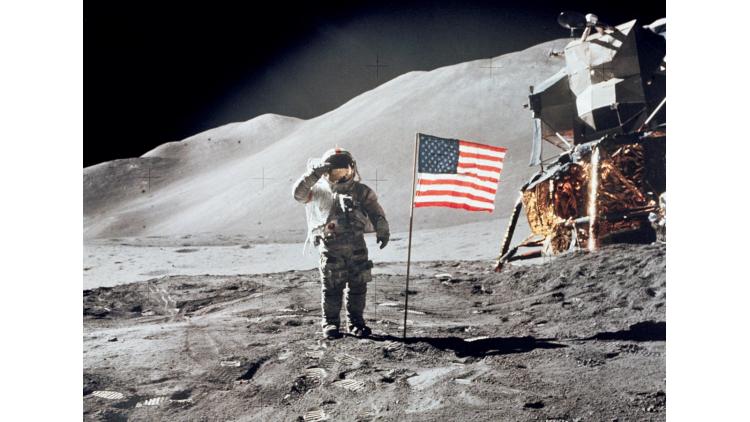
In the half century since astronauts first walked on the moon, packaging engineers have helped contributed to our country’s space travels by designing and producing packaging capable of functioning on a NASA spacecraft. The Packaging Digest coverage includes stories from astronaut Jim Lovell and his tales of interacting with packaging while floating in zero-gravity conditions.
Additionally, we showcase packages of containers designed to withstand the rigors of space travel. According to Air Zoo exhibits and collections manager April Bryan, “One thing we learned through the research process is that companies like Del Monte, Crest and Stouffers made products for the astronauts. Crest definitely went into space. For Apollo 11, Stouffers helped feed the astronauts during their post-moon landing quarantine.”

5. What can you learn from great packaging designs and concepts?
Looking for inspiration to help fuel your next big packaging project? Try the Packaging Design free database of new packages we’ve posted over the years.
These databases have been organized for simple scanning, with a link to each of the articles mentioning the design. Brief summaries of each article explain all the compelling attributes of the packaging. Also, color photos and captions outline critical details.
The packaging profiled in the databases covers a range of markets, including high-growth arenas like cannabis, toys and beverages. The brands include smaller startups, as well as major players like PepsiCo, GlaxoSmithKline and Procter & Gamble.
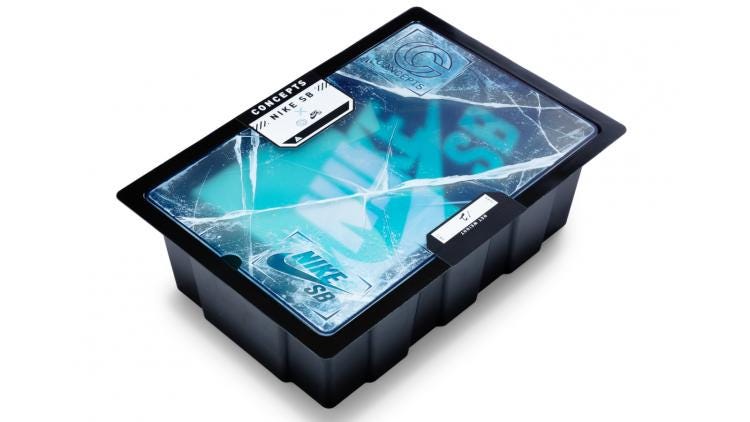
4. Nike’s new green lobster shoe box tests packaging limits
There’s something fishy about Nike’s creative packaging for its Concepts x Nike SB Green Lobster Dunks shoes. Instead of housing the footwear in a traditional box, this package more closely resembles something you’d use to hold fresh seafood.
The limited-edition packaging for the collectible kicks features a thermoformed box topped with an acrylic sheet, designed to resemble the totes commercial fishing ships use to hold lobsters and other sea creatures. Wide rubber bands wrapped around the toes of the athletic shoes mimic the bands placed on lobster claws after the animals are caught.
The packaging was unveiled in December 2018 at retail events at Concepts International’s boutiques in New York City and Cambridge, MA. Dordan Manufacturing Inc. created the singular container.

3. 10 pack redesigns earn honors in Nielsen competition
The Nielsen Design Impact awards honor achievements in packaging redesign, weighing the revamp’s effect on sales, brand perceptions and trial. Entries come from a range of markets, including food, beverage, personal care and more.
The 2019 competition tapped 10 winners, saluting their redesigns’ impact and effectiveness. Select honored packages include:
• M&Ms pouch: Mars Wrigley Confectionery switched from lay-flat bags to stand-up pouches to create a brand billboard on the shelf.
• Icelandinc Provisions Skyr yogurt cups: The updated cups include an easier-to-recycle cup with less plastic than the previous version.
• Arwana Oil cooking oil bottles: The new bottles include a consumer-friendly ergonomic handle, and an updated color to reinforce the brand quality.
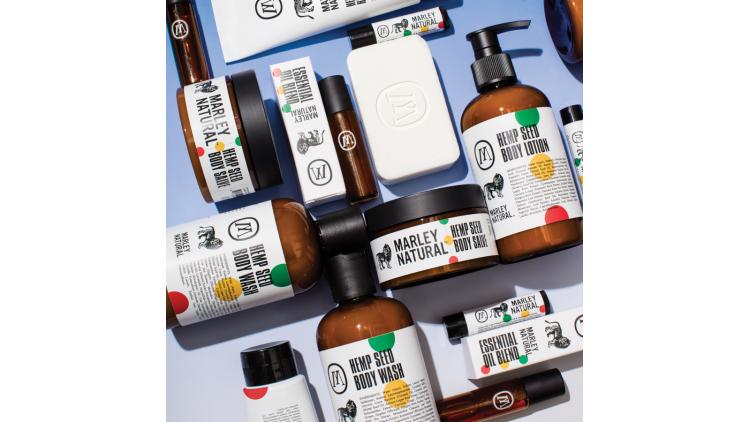
2. 7 best packaging practices for cannabis marketers
With cannabis becoming legal in more states every year, cannabis marketers are being called on to step up their packaging game. Brands must offer packaging that enables their products to stand out, connect with consumers, send a message and more.
While the product category may be relatively novel, the basic principles of packaging design largely apply. These include:
• Aim for maximum shelf impact.
• Consider shape, color and text.
• Embrace tech and social media.
• Communicate responsibility messaging.
• Understand the consumer.
• Be authentic.
• Don’t view cannabis as exotic.
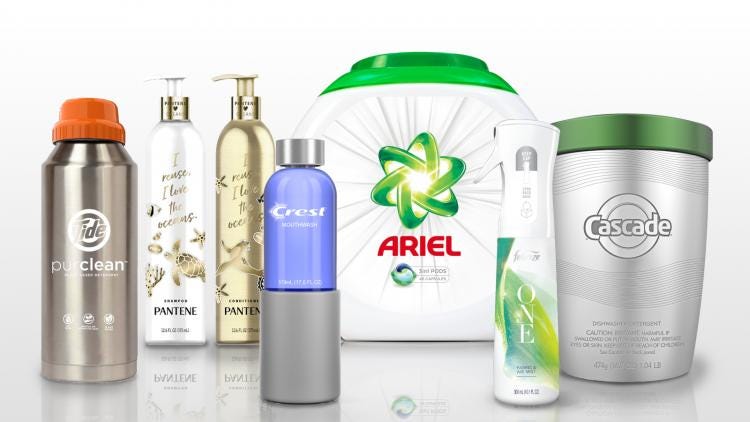
1. Loop and big brands boldly reinvent waste-free packaging
Consumers are about their environmental impact, particularly when it comes to packaging. Increasingly, these sustainability-minded shoppers are looking into ways to minimize the amount of waste they create, and possibly eliminate packaging waste altogether.
Enter Loop, which puts products in durable, reusable containers. Launched via recycling/upcycling/waste management company TerraCycle, the circular shopping platform is supported by Nestlé, Coca-Cola, Unilever and Procter & Gamble among other brand owners. The program brings together brands, retailers, delivery and waste-management companies. Loop launched in the spring with pilots in Paris and New York, and has already been expanded.
Nestle Product Technology Center for Ice Cream packaging manager Tommy See Tho says, “Nestlé is working to reduce its environmental impact in all its business operations, while also finding innovative new ways to connect with and provide great products to consumers. As part of these efforts, Nestlé is proud to join TerraCycle as a founding partner of Loop.”
About the Author(s)
You May Also Like


